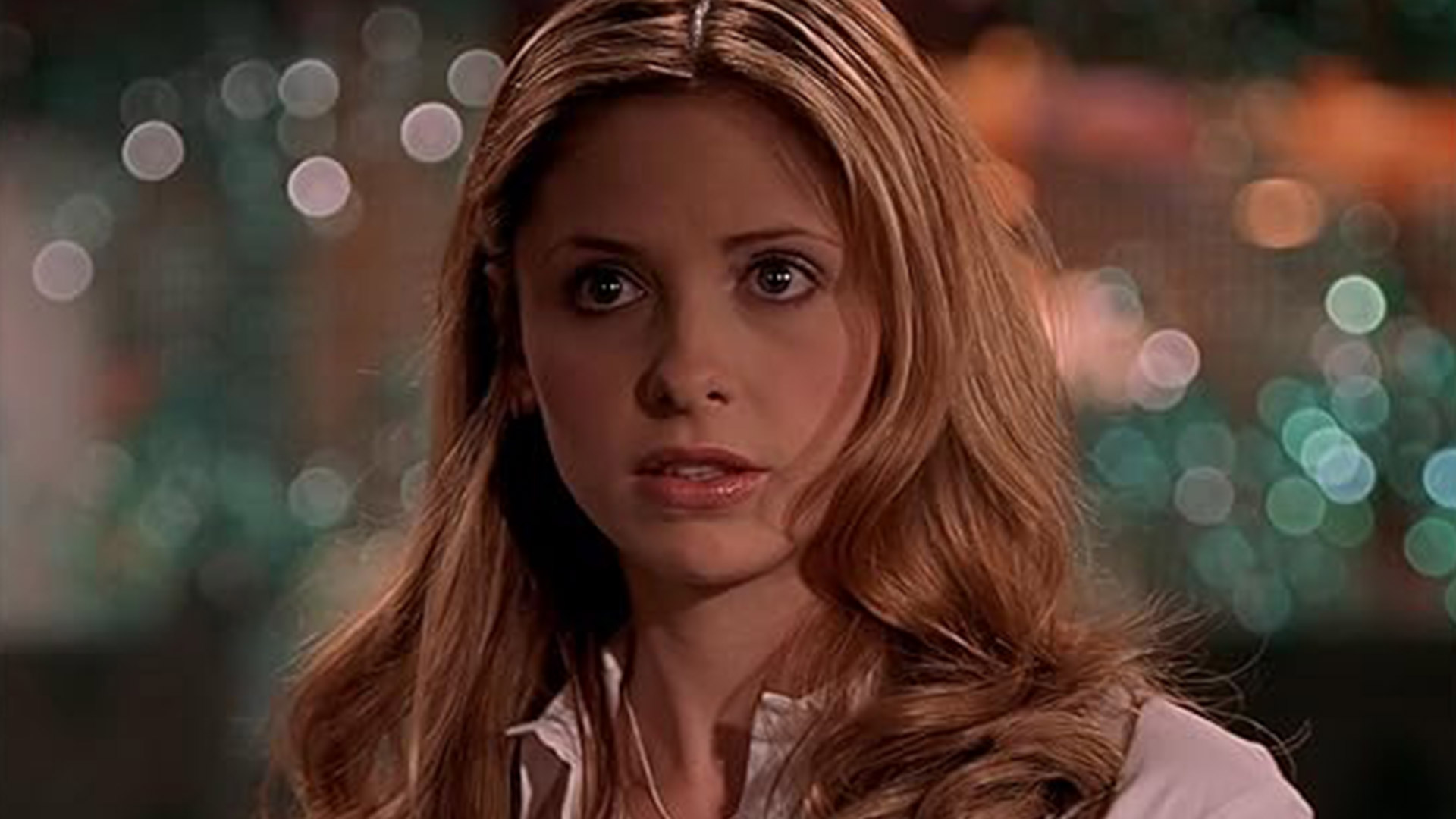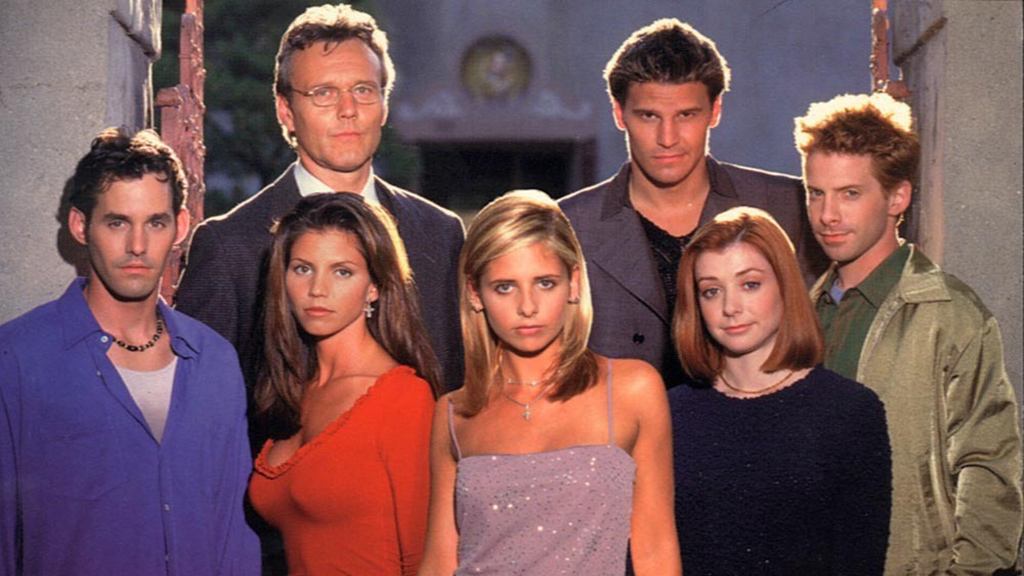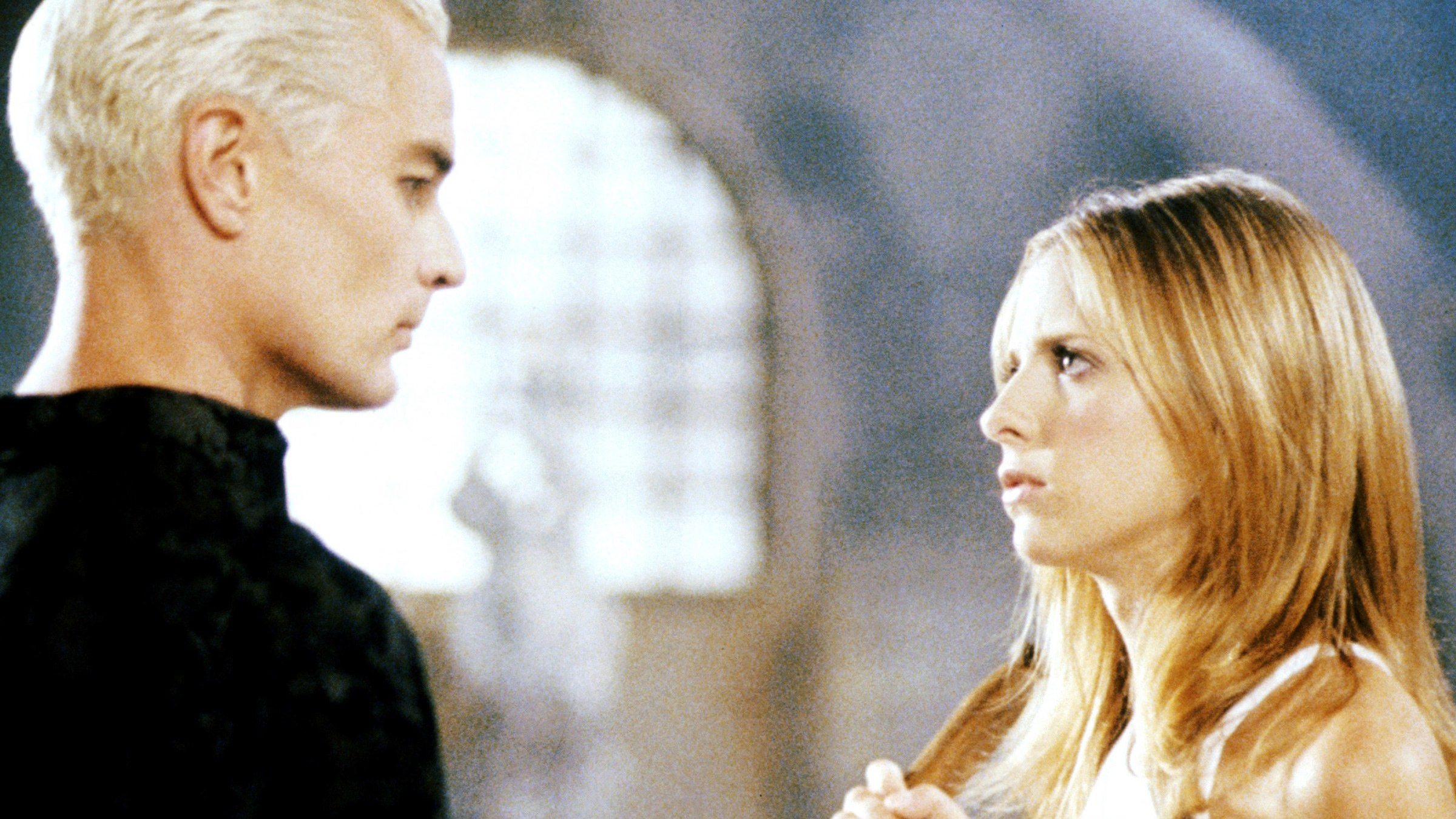Hit new Max movie I Saw the TV Glow made me revisit my favorite TV show from the 90s on Hulu
In every generation, there is a chosen one

This article contains spoilers for I Saw the TV Glow (2024) and Buffy the Vampire Slayer seasons 1-7.
When I finished watching Jane Schoenbrun’s I Saw the TV Glow (2024), which is new on Max in September 2024, my universe shifted and all the pieces of my queer identity fell into place. I can say with confidence that Schoenbrun’s psychological thriller will reign as my favorite movie of 2024 (and I'm not alone), not just because of its depth and intricacy but because it has sparked a need for me to revisit my favorite TV show of all time.
As it was for a lot of queer people, a little 90s TV show called Buffy the Vampire Slayer was that awakening. And while I was too young to remember it during its years on television, I did my gay homework at age 16 when Buffy was one of the best series on Netflix in the UK, before it was removed just months after I started watching.
After years of relying on my physical boxset to quench my thirst for Buffy, Hulu brought my favorite TV show back to one of the best streaming services, making it now one of the best Hulu shows. Re-watching it alongside the context of I Saw the TV Glow (trailer below) has changed everything I thought I knew about my infatuation with Buffy the Vampire Slayer.
An instant queer modern classic
If you haven’t seen I Saw the TV Glow, I’ll give you the TLDR version (too long, don't read). Teenagers Maddy (Brigitte Lundy-Paine) and Owen (Justice Smith) are high school outcasts living in the suburbs in the mid-90s, where both find themselves bonding over their shared obsession with a young-adult TV show called 'The Pink Opaque'. Following the show’s cancellation and Maddy’s unexpected disappearance, the two find themselves unraveling their queer identities as they question why they found the show so fascinating in the first place.
Using Buffy as the core inspiration for The Pink Opaque’s characters and story, the parallels and, often on-the-nose, references to the ‘90s show are incredibly nostalgic. For a start, the show’s fictional characters, Tara and Isabel, are blatant comparisons to sapphic witches Willow Rosenberg and Tara Maclay from Buffy, and watching the characters in the movie’s TV show reminded me of everything I loved about watching Willow and Tara’s storyline unfold in seasons 4-6 of Buffy the Vampire Slayer - excluding Tara’s tragic death, which is a painful episode to watch even to this day.

And that’s not to mention that the entire premise of The Pink Opaque draws a direct comparison to the narrative structure of Buffy. Tara and Isabel, the witchy duo in The Pink Opaque, fight a new monster / creature each episode by "harnessing the full potential of their shared powers" while sitting under the watchful eye of the main villain, Mr Melancholy. To me, the fictional antagonist is an amalgamation of the ‘big bad’ in Buffy – a term used to describe major villains who are built up from the beginning of a season to the end, for example; The Master (season one), Mayor Wilkins (season three), Adam (season four), Gloria (season five).
Sign up for breaking news, reviews, opinion, top tech deals, and more.
As the events of The Pink Opaque lead to the show’s gripping finale, we see Maddy and Owen growing more attached to the two characters for reasons they can’t quite put their finger on. As a result, Maddy disappears and Owen represses their transness, which makes them spiral into a dysphoric identity crisis.

“The Pink Opaque seems more real than real life”
Is a quote that Maddy utters during the plot’s early stages. It was this line alone that put everything into perspective, and as I make progress through my re-watch of Buffy I’m beginning to understand why it was – and still is – my favorite TV show of all time.
My biggest takeaway was how the new horror movie I Saw the TV Glow brought attention to two particular ways that queer people resonated with shows like Buffy the Vampire Slayer. First, there’s the recognition of oneself in characters with purposeful narratives and experiences that emulate one’s own. This is clear in Owen’s case, whose attraction to the character of Isabel is the gateway to them discovering their trans identity. The second one is less complex, and that’s the infatuation with characters that ignite sexual attraction, which is the case for Maddy and her attraction to Tara in The Pink Opaque.

In my personal experience with watching Buffy the Vampire Slayer, it was both of these factors combined. I saw, and still see a lot of myself, in the character of Buffy especially during season two and into season three. Here I was presented with a character with a hidden secret, which resulted in her having to essentially ‘come out’ as the Slayer and although the character of Buffy is straight, her coming out as the Slayer to her mother carried a lot of similar weight to that of a queer coming out process.
While I could see some of myself in Owen, I resonated more with Maddy and her attraction to Tara as it helped me comprehend why I was so drawn to Angel and Spike in Buffy. The short answer is, I found both of the vampire heartthrobs very attractive, and they were my first on-screen crushes when I started coming to terms with my queer identity. This is something I’ve only recently realized, and it’s all because Jane Schoenbrun’s thriller has given me the solutions to the unanswered questions I’ve been asking for years. Buffy the Vampire Slayer was one of my biggest queer awakenings, so having someone put that experience into perspective was exactly what I needed.
Not in the US to stream I Saw the TV Glow on Max? The hit new movie is available to rent or buy on the A24 app, Apple TV, Amazon or YouTube in the UK, while in Australia, it's in the theaters still.
You might also like
- 4 of my all-time favorite movies with over 90% on Rotten Tomatoes are streaming on Netflix, Prime Video, Max and more
- 'They're more seductive and sinister': The Rings of Power creators tease how the rings for dwarves and men differ from their elven cousins
- I don't watch a lot of animation, but I'm dying to sink my teeth into Netflix's upcoming Twilight animated series

Rowan is an Editorial Associate and Apprentice Writer for TechRadar. A recent addition to the news team, he is involved in generating stories for topics that spread across TechRadar's categories. His interests in audio tech and knowledge in entertainment culture help bring the latest updates in tech news to our readers.
